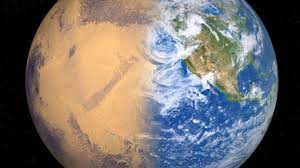Finding signs of alien lives on other planets has been one of the main concerns of explorers and scientists. However, it has not been achieved much until now. But scientists are not waiving their search and appear determined to unravel the mysteries surrounding our solar system. Committedly trying to answer the most disconcerting questions of all: If we are alone in this world and are there or have there been more more terrestrial species? If other planets are or were able to support lives? In a recent interview, Jim Green talked about his cold scale and explained how we can terraform Mars to be habitable for humans.
Green joined NASA in 1980 and, since then, has participated in key papers in several missions and experiments from the space agency. He has helped NASA undertake several complex missions, including the understanding of the magnetic field of the Earth and look for life on Mars. After spending four decades in NASA, during 12 of which he led his division of planetary sciences, Green retired from the Agency in the New Year. “The confidence of the detection of life”, or the cold scale is one of the notable proposals of it. Green has proposed that humans could live a day on Mars if we created a giant magnetic field on the red planet to prevent the sun from removing the atmosphere there, raising the temperature on the Martian surface.
Mars is hard and cold, since its thin atmosphere is 95 percent of carbon dioxide. The temperature on the arid planet is about less than 60 degrees Celsius, on average. During winters, the temperature near the poles can be immersed less than 125 degrees celcius.
In this context, how good does the Green scale work? He asked about it during an interview of the New York Times, Green said that the possibility of the existence of life is measured on his cold scale from one at seven o’clock, where seven means life. Explaining his importance, he said a couple of years ago, some scientists said they had found phosphine in Venus. For them, it was huge but on the cold scale it was “one”. Later, they realized that there was pollution in their signal, and what many had not even phosphine beings found.
In Mars, a lot of methane has been detected. “(But) we are only at a cold level 3.”
Despite the exploration of Mars Mars of NASA since 1976, is it surprised that we have not yet found life on the red planet? “Yes and no,” Green said. He said that scientists have made great progress from the first days. For example, we now know that Venus was once a blue planet with an important ocean “. Actually he could have had life,” he added in a similar way, Mars was also a blue planet once.

